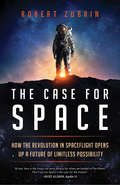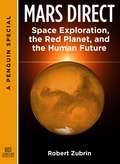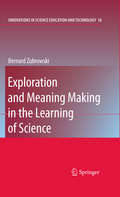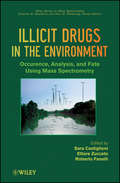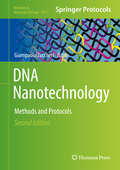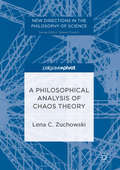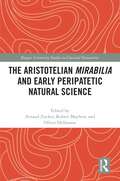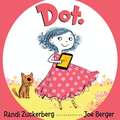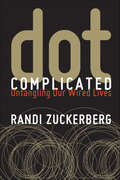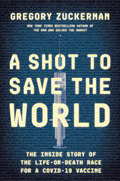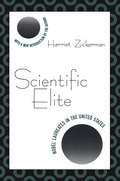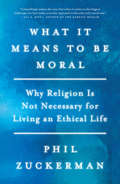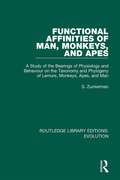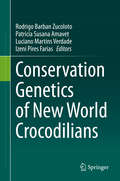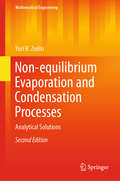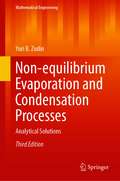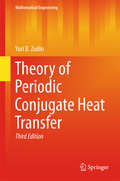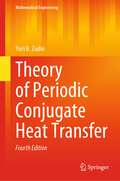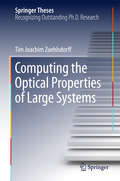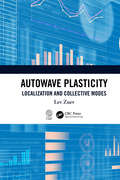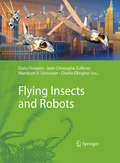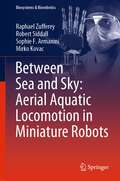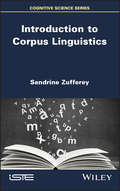- Table View
- List View
The Case for Space: How the Revolution in Spaceflight Opens Up a Future of Limitless Possibility
by Robert ZubrinA noted space expert explains the current revolution in spaceflight, where it leads, and why we need it.A new space race has begun. But the rivals in this case are not superpowers but competing entrepreneurs. These daring pioneers are creating a revolution in spaceflight that promises to transform the near future. Astronautical engineer Robert Zubrin spells out the potential of these new developments in an engrossing narrative that is visionary yet grounded by a deep understanding of the practical challenges.Fueled by the combined expertise of the old aerospace industry and the talents of Silicon Valley entrepreneurs, spaceflight is becoming cheaper. The new generation of space explorers has already achieved a major breakthrough by creating reusable rockets. Zubrin foresees more rapid innovation, including global travel from any point on Earth to another in an hour or less; orbital hotels; moon bases with incredible space observatories; human settlements on Mars, the asteroids, and the moons of the outer planets; and then, breaking all limits, pushing onward to the stars.Zubrin shows how projects that sound like science fiction can actually become reality. But beyond the how, he makes an even more compelling case for why we need to do this--to increase our knowledge of the universe, to make unforeseen discoveries on new frontiers, to harness the natural resources of other planets, to safeguard Earth from stray asteroids, to ensure the future of humanity by expanding beyond its home base, and to protect us from being catastrophically set against each other by the false belief that there isn't enough for all.
How to Live on Mars: A Trusty Guidebook to Surviving and Thriving on the Red Planet
by Robert ZubrinThinking about moving to mars? Well, why not? Mars, after all, is the planet that holds the greatest promise for human colonization. But why speculate about the possibilities when you can get the real scientific scoop from someone who's been happily living and working there for years? Straight from the not-so-distant future, this intrepid pioneer's tips for physical, financial, and social survival on the Red Planet cover: * How to get to Mars (Cycling spacecraft offer cheap rides, but the smell is not for everyone. ) * Choosing a spacesuit (The old-fashioned but reliable pneumatic Neil Armstrong style versus the sleek new--but anatomically unforgiving--elastic "skinsuit. ") * Selecting a habitat (Just like on Earth: location, location, location. ) * Finding a job that pays well and doesn't kill you (This is not a metaphor on Mars. ) * How to meet the opposite sex (Master more than forty Mars-centric pickup lines. ) With more than twenty original illustrations by Michael Carroll, Robert Murray, and other renowned space artists,How to Live on Marsseamlessly blends humor and real science, and is a practical and exhilarating guide to life on our first extraterrestrial home.
Mars Direct
by Robert ZubrinThe human race is at a crossroads. In the coming years, we will make decisions regarding our human spaceflight program that will lead to one of two familiar futures: the open universe of Star Trek, where we allow ourselves the opportunity to spread our wings and attempt to flourish as an interplanetary species-or the closed, dystopian, and ultimately self-destructive world of Soylent Green. If we ever hope to live in the future that is the former scenario, our first stepping stone must be a manned mission to Mars. Dr. Robert Zubrin details the challenges of a manned Earth-to-Mars mission. Challenges which, according to Zubrin, we are technologically more prepared to overcome than the obstacles of the missions to the moon of the sixties and seventies. Dr. Zubrin's relatively simple plan, called Mars Direct, could feasibly have humans on the surface of Mars within a decade. Zubrin also discusses the current predicament of NASA, the promise of privatized space flight from companies like SpaceX, and the larger implication behind the absolute necessity to open the final frontier to humanity-the human race's future as a species that takes the necessary baby steps away from the cradle that is planet Earth or, ultimately, perishes here.
Exploration and Meaning Making in the Learning of Science
by Bernard ZubrowskiThis book provides a broad and deep rationale for various pedagogical practices associated with the teaching of science. The main thesis of this book is that the exploratory phase of scientific inquiry is undervalued and its purpose misunderstood. Furthermore, there is a need for an expanded conception or alternative way of thinking about the so called learning cycle that has been frequently cited as the pedagogical model for a fair number of curriculum programs. A pedagogical model is proposed that recognizes learning cycles as ones that build on each other in an in-depth developmental manner. It presents an alternative paradigm that gives more attention to the motivation of students and assigns an essential role for student input. The overall goal is to move the reader to think more holistically about the practice of science education. This original and unorthodox book summarizes the author's present thinking about curriculum design and direct work with students. The author draws upon his varied experiences to present a case for the importance of direct engagement with phenomena and materials. He argues that this practice is more than a matter of motivating students to become engaged in inquiry. The first four chapters lay out different levels of a pedagogical approach and an overall theoretical orientation. The middle chapters focus on what might be called sensory knowledge. These are concerned with the role of different sensory engagement, movement as related to gestural representation and the role of empathy in exploration. The last four chapters are about the role of aesthetic, play, variable exploration and metaphor in their shaping of science education experiences. Each chapter is introduced with a scenario or case study describing the behavior and talk of elementary or middle school students. The intention of these scenarios is to help the reader stay grounded while considering the more abstract development of research reports and broader philosophical issues.
Illicit Drugs in the Environment
by Ettore Zuccato Roberto Fanelli Sara CastiglioniIllicit drugs are an emerging class of environmental contaminants and mass spectrometry is the technique of choice for their analysis. This landmark reference discusses the analytical techniques used to detect illicit drugs in wastewater and surface water, details how to estimate the levels of contaminants in the environment, and explores the behavior, fate, and toxic effects of this new class of contaminants, now a ubiquitous presence in wastewater and surface water. The book details how an estimate of illicit drug consumption in a given population can be developed from an analysis of the residues of illicit drugs in wastewater. An important resource for analytical chemists, environmental researchers, forensic scientists, biologists, and toxicologists.
DNA Nanotechnology: Methods and Protocols (Methods in Molecular Biology #1811)
by Giampaolo ZuccheriThis second edition provides new and updated methods that detail new DNA nanotechnology techniques. Chapters focus on DNA origami nanostructures for arranging matter in the nanoscale or on their manipulation with the aid of other technologies, on procedures for making nucleic acids nanostructures of different kinds, and methods to simulate complex nanostructures or to use them in biosensing. Written in the highly successful Methods in Molecular Biology series format, chapters include introductions to their respective topics, lists of the necessary materials and reagents, step-by-step, readily reproducible laboratory protocols, and tips on troubleshooting and avoiding known pitfalls.Authoritative and cutting-edge, DNA Nanotechnology: Methods and Protocols, Second Edition aims to ensure successful results in the further study of this vital field.
A Philosophical Analysis of Chaos Theory
by Lena C. ZuchowskiThis book provides an analysis of the construction, diagnosis (as chaotic) and evaluation of models in chaos theory. It contains a detailed look at the interaction of the different models used in chaos theory and analyses how these models influence the way chaos is defined. Furthermore, the book discusses the conditions for the occurrence of chaos and the detection of chaos in nature.
The Aristotelian Mirabilia and Early Peripatetic Natural Science (Rutgers University Studies in Classical Humanities)
by Arnaud ZuckerThis is the first volume devoted to the sections of the Aristotelian Mirabilia on natural science, filling a significant gap in the history of the Aristotelian study of nature and especially of animals. The chapters in this volume explore the Mirabilia, or De mirabilibus auscultationibus (On Marvelous Things Heard), and its engagement with the natural sciences. The first two chapters deliver an introduction to this work: one a discussion of the history of the text; the other a discussion of Aristotelian epistemology and methodology, and the role of the Mirabilia in that context. This is followed by eight chapters that, together, are effectively a commentary on those sections of the Mirabilia with close connections to Aristotle’s Historia animalium and to a number of Theophrastus’ scientific treatises. Finally, the volume ends with two chapters on thematic topics connected to natural science running throughout the work, namely color and disease. The Aristotelian Mirabilia and Early Peripatetic Natural Science should prove invaluable to scholars and students interested in the ancient Greek study of nature, ancient philosophy, and Aristotelian science in particular.
Dot.
by Randi Zuckerberg*NOW A HIT TV SERIES*Meet Dot in this debut picture book by CEO and founder of Zuckerberg Media, editor-in-chief of Dot Complicated, and former Marketing Director of Facebook, Randi Zuckerberg! Dot's a spunky little girl well versed in electronic devices—she’s a technophile. She knows how to tap . . . to swipe . . . to share . . . and she pays little attention to anything else.Dot's tech-savvy expertise, mingled with her resourceful imagination, proves Dot knows lots and lots.But will she be able to unplug for one second to tap…swipe…and share with her real-life friends? Find out in this wonderful story about the day when Dot sets off on an interactive adventure with the world surrounding her.
Dot Complicated: Untangling Our Wired Lives
by Randi ZuckerbergWith Dot Complicated: Untangling Our Wired Lives, new media pioneer Randi Zuckerberg offers an entertaining and essential guide to understanding how technology and social media influence and inform our lives online and off.Zuckerberg has been on the frontline of the social media movement since Facebook’s early days and her following six years as a marketing executive for the company. Her part memoir, part how-to manual addresses issues of privacy, online presence, networking, etiquette, and the future of social change.
A Shot to Save the World: The Inside Story of the Life-or-Death Race for a COVID-19 Vaccine
by Gregory Zuckerman"An inspiring and informative page-turner." –Walter IsaacsonLonglisted for the FT/McKinsey Business Book of the Year Award The authoritative account of the race to produce the vaccines that are saving us all, from the #1 New York Times bestselling author of The Man Who Solved the MarketFew were ready when a mysterious respiratory illness emerged in Wuhan, China in January 2020. Politicians, government officials, business leaders, and public-health professionals were unprepared for the most devastating pandemic in a century. Many of the world&’s biggest drug and vaccine makers were slow to react or couldn&’t muster an effective response. It was up to a small group of unlikely and untested scientists and executives to save civilization. A French businessman dismissed by many as a fabulist. A Turkish immigrant with little virus experience. A quirky Midwesterner obsessed with insect cells. A Boston scientist employing questionable techniques. A British scientist despised by his peers. Far from the limelight, each had spent years developing innovative vaccine approaches. Their work was met with skepticism and scorn. By 2020, these individuals had little proof of progress. Yet they and their colleagues wanted to be the ones to stop the virus holding the world hostage. They scrambled to turn their life&’s work into life-saving vaccines in a matter of months, each gunning to make the big breakthrough—and to beat each other for the glory that a vaccine guaranteed. A #1 New York Times bestselling author and award-winning Wall Street Journal investigative journalist lauded for his &“bravura storytelling&” (Gary Shteyngart) and &“first-rate&” reporting (The New York Times), Zuckerman takes us inside the top-secret laboratories, corporate clashes, and high-stakes government negotiations that led to effective shots. Deeply reported and endlessly gripping, this is a dazzling, blow-by-blow chronicle of the most consequential scientific breakthrough of our time. It&’s a story of courage, genius, and heroism. It&’s also a tale of heated rivalries, unbridled ambitions, crippling insecurities, and unexpected drama. A Shot to Save the World is the story of how science saved the world.
Scientific Elite: Nobel Laureates in the United States
by Harriet ZuckermanScientific Elite is about Nobel prize winners and the well-defined stratification system in twentieth-century science. It tracks the careers of all American laureates who won prizes from 1907 until 1972, examining the complex interplay of merit and privilege at each stage of their scientific lives and the creation of the ultra-elite in science.The study draws on biographical and bibliographical data on laureates who did their prize-winning research in the United States, and on detailed interviews with forty-one of the fifty-six laureates living in the United States at the time the study was done. Zuckerman finds laureates being successively advantaged as time passes. These advantages are producing growing disparities between the elite and other scientists both in performance and in rewards, which create and maintain a sharply graded stratification system.
What It Means to Be Moral: Why Religion Is Not Necessary for Living an Ethical Life
by Phil Zuckerman“A thoughtful perspective on humans' capacity for moral behavior.” —Kirkus Reviews“A comprehensive introduction to religious skepticism.” —Publishers WeeklyIn What It Means to Be Moral: Why Religion Is Not Necessary for Living an Ethical Life, Phil Zuckerman argues that morality does not come from God. Rather, it comes from us: our brains, our evolutionary past, our ongoing cultural development, our social experiences, and our ability to reason, reflect, and be sensitive to the suffering of others.By deconstructing religious arguments for God–based morality and guiding readers through the premises and promises of secular morality, Zuckerman argues that the major challenges facing the world today—from global warming and growing inequality to religious support for unethical political policies to gun violence and terrorism—are best approached from a nonreligious ethical framework. In short, we need to look to our fellow humans and within ourselves for moral progress and ethical action.“In this brilliant, provocative, and timely book, Phil Zuckerman breaks down the myth that our morality comes from religion—compellingly making the case that when it comes to the biggest challenges we face today, a secular approach is the only truly moral one.” —Ali A. Rizvi, author of The Atheist Muslim
Functional Affinities of Man, Monkeys, and Apes: A Study of the Bearings of Physiology and Behaviour on the Taxonomy and Phylogeny of Lemurs, Monkeys, Apes, and Man (Routledge Library Editions: Evolution #15)
by S. ZuckermanOriginally published in 1933 Functional Affinities of Man, Monkeys and Apes gives a taxonomic and phylogenetic survey and the findings of diverse experimental investigations of lemurs, monkeys, and apes. The book discusses the inter-relationships of different Primates and emphasizes seldom-used approaches to the question of primate phylogeny. The book attempts to show how little they have been systematically tried, and argues for a regard to the proper place of functional investigations in the study of the classification and evolution of Primates. This book will be of interest to anthropologists, scientists and historians alike.
Conservation Genetics of New World Crocodilians
by Rodrigo Barban Zucoloto Patricia Susana Amavet Luciano Martins Verdade Izeni Pires FariasThis book aims to be a comprehensive review of the literature on the conservation genetics of the New World crocodilians, from the biological and demographical aspects of the living species to the application of molecular techniques for conservation purposes. It covers the current status of the molecular genetics applied to phylogenetics, phylogeography, diversity, kinship and mating system, and hybridization, as well its implications for decision making with regards to the conservation of these species at academic and governmental levels. This book can be used as a guide for graduate and undergraduate students to understand how conservation genetics techniques are carried out and how they can help preserve not only crocodilians but also other living species.
The Textbook of Angiogenesis and Lymphangiogenesis: Methods and Applications
by Enrique Zudaire Frank CuttittaAngiogenesis and lymphangiogenesis have become attractive targets for drug therapy because of their key roles in a broad spectrum of pathological disease states ranging from macular degeneration to tumor growth and metastasis. A substantial increase in the research effort over the past decade has deepened our understanding of the basic mechanisms underlying angiogenesis and lymphangiogenesis, promoting the development of promising therapeutics for the clinical management of vascular-related diseases. These extraordinary advancements have been built upon a vast array of diverse analytical techniques developed globally throughout the field. Over the years, these methods have evolved to suit the specific needs of different researchers and experimental scenarios, resulting in a myriad of technical variants of basic assay approaches. "The Textbook of Angiogenesis and Lymphangiogenesis: Methods and Applications" is an up-to-date comprehensive textbook on angiogenesis and lymphangiogenesis techniques and applications. This volume is designed to embody the collective works of experts in the clinical as well as the basic research arenas who have significantly contributed to the development and application of techniques in all areas of angiogenesis and lymphangiogenesis. Each chapter introduces and discusses one or a group of closely related techniques and convey step-by-step protocol information and detailed technical guidance to the reader. Emphasis has been placed on explanatory illustrations, critical technical steps as well as divulging information on the benefits and caveats of specific practices related to the methods discussed. This manual is intended to serve as a written guide for both newcomers and established professionals in the field.
Non-equilibrium Evaporation and Condensation Processes: Analytical Solutions (Mathematical Engineering)
by Yuri B. ZudinThis monograph is focused mostly on the exposition of analytical methods for the solution of problems of strong phase change. A new theoretical model is proved useful in describing, with acceptable accuracy, problems of strong evaporation and condensation. The book is the first to treat the problem of asymmetry for evaporation/condensation. A semi-empirical model for the process is proposed for purposes of practical calculation of the process of strong evaporation. The “limiting schemes” of the vapor bubble growth are analyzed. The thermo-hydrodynamic problem of evaporating meniscus of a thin liquid film on a heated surface is considered. A theoretical analysis of the problem of evaporation of a drop levitating over a vapor cushion is performed. The problem of vapor condensation upon a transversal flow around a horizontal cylinder is considered. The second edition is extended by (i) the conjugate “strong evaporation - heat conduction” problem, (ii) the influence of accommodation coefficients on intensive processes of evaporation and condensation, (iii) the problem of supersonic condensation. This book is the first to present a comprehensive theoretical approach of boiling problems: nucleate boiling, superfluid helium phase transition, similarity between pseudo-boiling and subcritical pressure nucleate boiling. The target audience primarily comprises research experts in the field of thermodynamics and fluid dynamics, but the book may also be beneficial for graduate students.
Non-equilibrium Evaporation and Condensation Processes: Analytical Solutions (Mathematical Engineering)
by Yuri B. ZudinThis present book is concerned with analytical approaches to statement and solution of problems of non-equilibrium evaporation and condensation. From analytical solutions, one is capable to understand and represent in a transparent form the principal laws, especially in the study of a new phenomenon or a process. This is why analytical methods are always employed on the first stage of mathematical modeling. Analytical solutions are also used as test models for validation of results numerical solutions. Non-equilibrium evaporation and condensation processes play an important role in a number of fundamental and applied problems: laser methods for processing of materials, depressurization of the protection cover of nuclear propulsion units, solar radiation on a comet surface, explosive boiling of superheated liquid, thermodynamic principles of superfluid helium. Analytical relations provide an adequate description of the essence of a physical phenomenon.
Theory of Periodic Conjugate Heat Transfer
by Yuri B. ZudinThis book provides a detailed yet comprehensive presentation of the theory of periodic conjugate heat transfer. It contains an analytical approach to the effects of thermophysical and geometrical properties of a solid body on the experimentally determined heat transfer coefficient. The main objective of the book is a simplified description of the interaction between a solid body and a fluid as a boundary value problem of the heat conduction equation. This third and extended edition covers Wall's thermal effect on Landau stability, gas bubbles pulsations in fluids, and also the interplay between periodic conjugate heat transfer and non-Fourier heat conduction. The target audience primarily comprises research experts in the field of thermodynamics and fluid dynamics, but the book may also be beneficial for graduate students in engineering.
Theory of Periodic Conjugate Heat Transfer (Mathematical Engineering)
by Yuri B. ZudinAn original method of investigation of the conjugate conductive-convective problem of periodic heat transfer is developed. The novelty of the approach is that a particular conjugate problem is replaced by a general boundary-value problem for the heat conduction equation in the solid. Within the framework of the hyperbolic model of thermal conductivity, the effect of self-reinforcement of the degree of conjugation by increasing the period of oscillations is found. The processes of hydrodynamics and heat exchange with periodic internal structure are considered: periodic model of turbulent heat transfer, hydrodynamic instability, bubbles dynamics in liquid, and model of evaporating meniscus. The book is intended as a source and reference work for researchers and graduate students interested in the field of conjugate heat transfer.
Computing the Optical Properties of Large Systems (Springer Theses)
by Tim Joachim ZuehlsdorffThis work addresses the computation of excited-state properties of systems containing thousands of atoms. To achieve this, the author combines the linear response formulation of time-dependent density functional theory (TDDFT) with linear-scaling techniques known from ground-state density-functional theory. This extends the range of TDDFT, which on its own cannot tackle many of the large and interesting systems in materials science and computational biology. The strengths of the approach developed in this work are demonstrated on a number of problems involving large-scale systems, including exciton coupling in the Fenna-Matthews-Olson complex and the investigation of low-lying excitations in doped p-terphenyl organic crystals.
Autowave Plasticity: Localization and Collective Modes
by Lev ZuevAutowave Plasticity: Localization and Collective Modes discusses the nature of plastic flow in solids associated with the development of a localized plastic flow. Written by an authority in the field, the author demonstrates how patterns of localized plastic flow are associated with autowave modes that are generated in a deformable sample and delivers a complete work on the subject. Key Features An original work on the nature of plastic flows in solids, particularly metals and crystals Focuses on plastic flow as an autowave process Contains elements of theories, experimental considerations, and numerical modeling This reference will help readers with creating experimental methods to observe or localize plastic flow and with the modeling of plastic flows. It is a valuable reference for graduate students and research specialists working in material science.
Flying Insects and Robots
by Jean-Christophe Zufferey Mandyam V. Srinivasan Dario Floreano Charlie EllingtonFlying insects are intelligent micromachines capable of exquisite maneuvers in unpredictable environments. Understanding these systems advances our knowledge of flight control, sensor suites, and unsteady aerodynamics, which is of crucial interest to engineers developing intelligent flying robots or micro air vehicles (MAVs). The insights we gain when synthesizing bioinspired systems can in turn benefit the fields of neurophysiology, ethology and zoology by providing real-life tests of the proposed models. This book was written by biologists and engineers leading the research in this crossdisciplinary field. It examines all aspects of the mechanics, technology and intelligence of insects and insectoids. After introductory-level overviews of flight control in insects, dedicated chapters focus on the development of autonomous flying systems using biological principles to sense their surroundings and autonomously navigate. A significant part of the book is dedicated to the mechanics and control of flapping wings both in insects and artificial systems. Finally hybrid locomotion, energy harvesting and manufacturing of small flying robots are covered. A particular feature of the book is the depth on realization topics such as control engineering, electronics, mechanics, optics, robotics and manufacturing. This book will be of interest to academic and industrial researchers engaged with theory and engineering in the domains of aerial robotics, artificial intelligence, and entomology.
Between Sea and Sky: Aerial Aquatic Locomotion in Miniature Robots (Biosystems & Biorobotics #29)
by Raphael Zufferey Robert Siddall Sophie F. Armanini Mirko KovacThis book reports on the state of the art in the field of aerial-aquatic locomotion, focusing on the main challenges concerning the translation of this important ability from nature to synthetic systems, and describing innovative engineering solutions that have been applied in practice by the authors at the Aerial Robotics Lab of Imperial College London. After a general introduction to aerial-aquatic locomotion in nature, and a summary of the most important engineering achievements, the book introduces readers to important physical and mathematical aspects of the multimodal locomotion problem. Besides the basic physics involved in aerial-aquatic locomotion, the role of different phenomena happening in fluids, or those due to structural mechanics effects or to power provision, are presented in depth, across a large dimension range, from millimeters to hundreds of meters. In turn, a practice-oriented discussion on the obstacles and opportunities of miniaturization, for both robots and animals is carried out. This is followed by applied engineering considerations, which describe relevant hardware considerations involved in propulsion, control, communication and fabrication. Different case studies are analyzed in detail, reporting on the latest research carried out by the authors, and covering topics such as propulsive aquatic escape, the challenging mechanics of water impact, and a hybrid sailing and flying aircraft. Offering extensive and timely information on the design, construction and operation of small-scale robots, and on multimodal locomotion, this book provides researchers, students and professionals with a comprehensive and timely reference guide to the topic of aerial-aquatic locomotion, and the relevant bioinspired approaches. It is also expected to inspire future research and foster a stronger multidisciplinary discussion in the field.
Introduction to Corpus Linguistics
by Sandrine ZuffereyOver the past decades, the use of quantitative methods has become almost generalized in all domains of linguistics. However, using these methods requires a thorough understanding of the principles underlying them. Introduction to quantitative methods in linguistics aims at providing students with an up-to-date and accessible guide to both corpus linguistics and experimental linguistics. The objectives are to help students developing critical thinking about the way these methods are used in the literature and helping them to devise their own research projects using quantitative data analysis.
